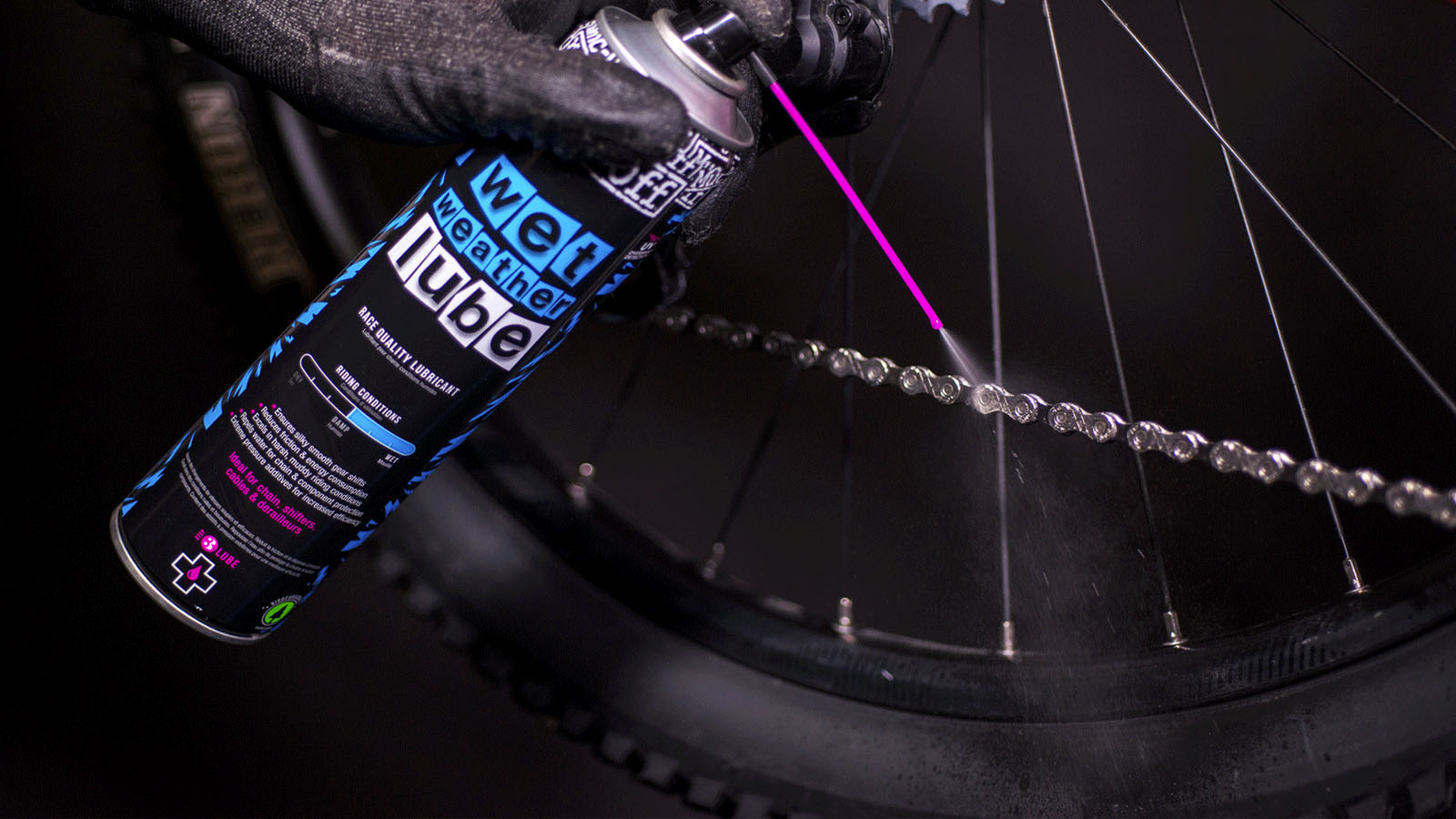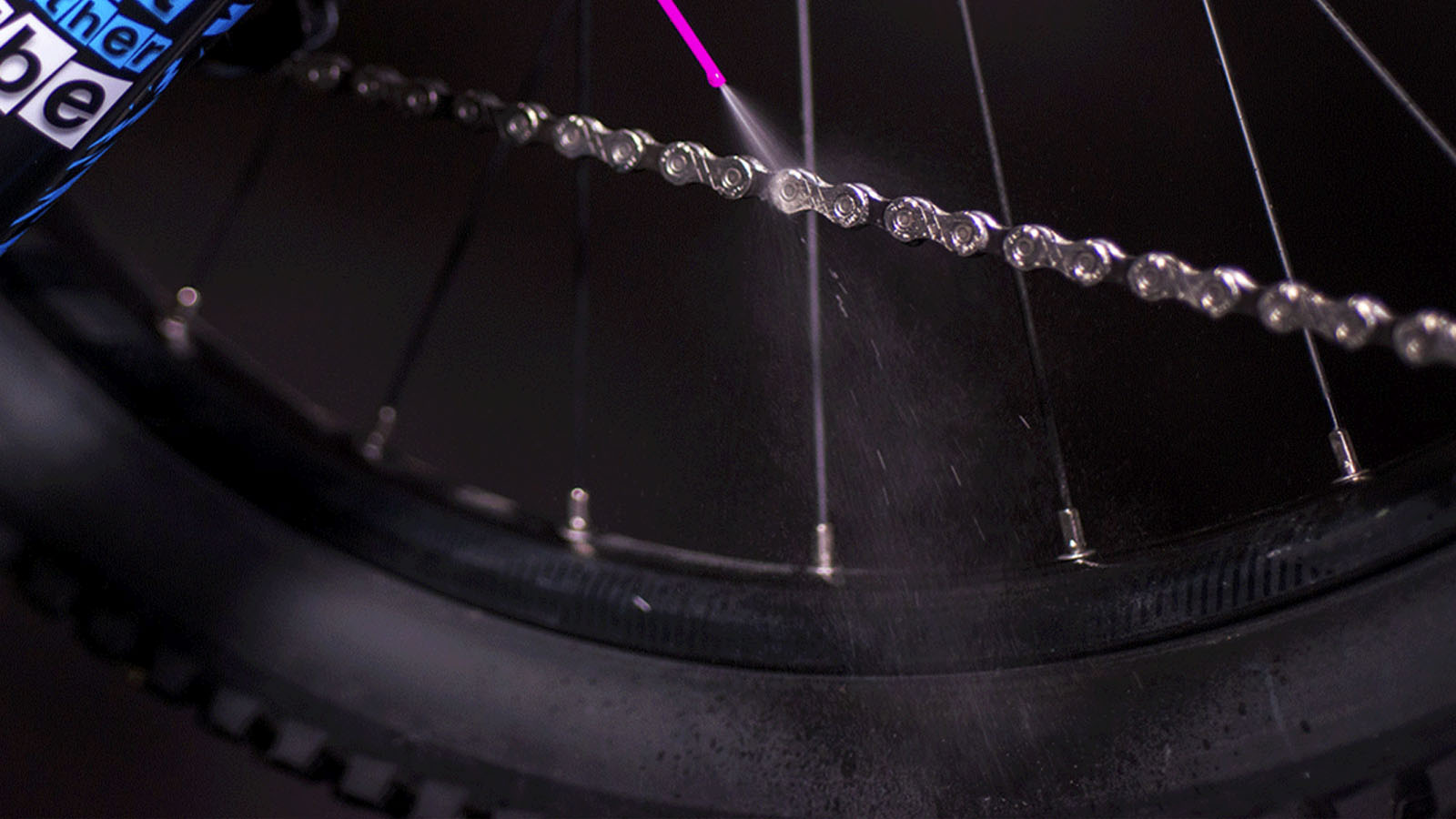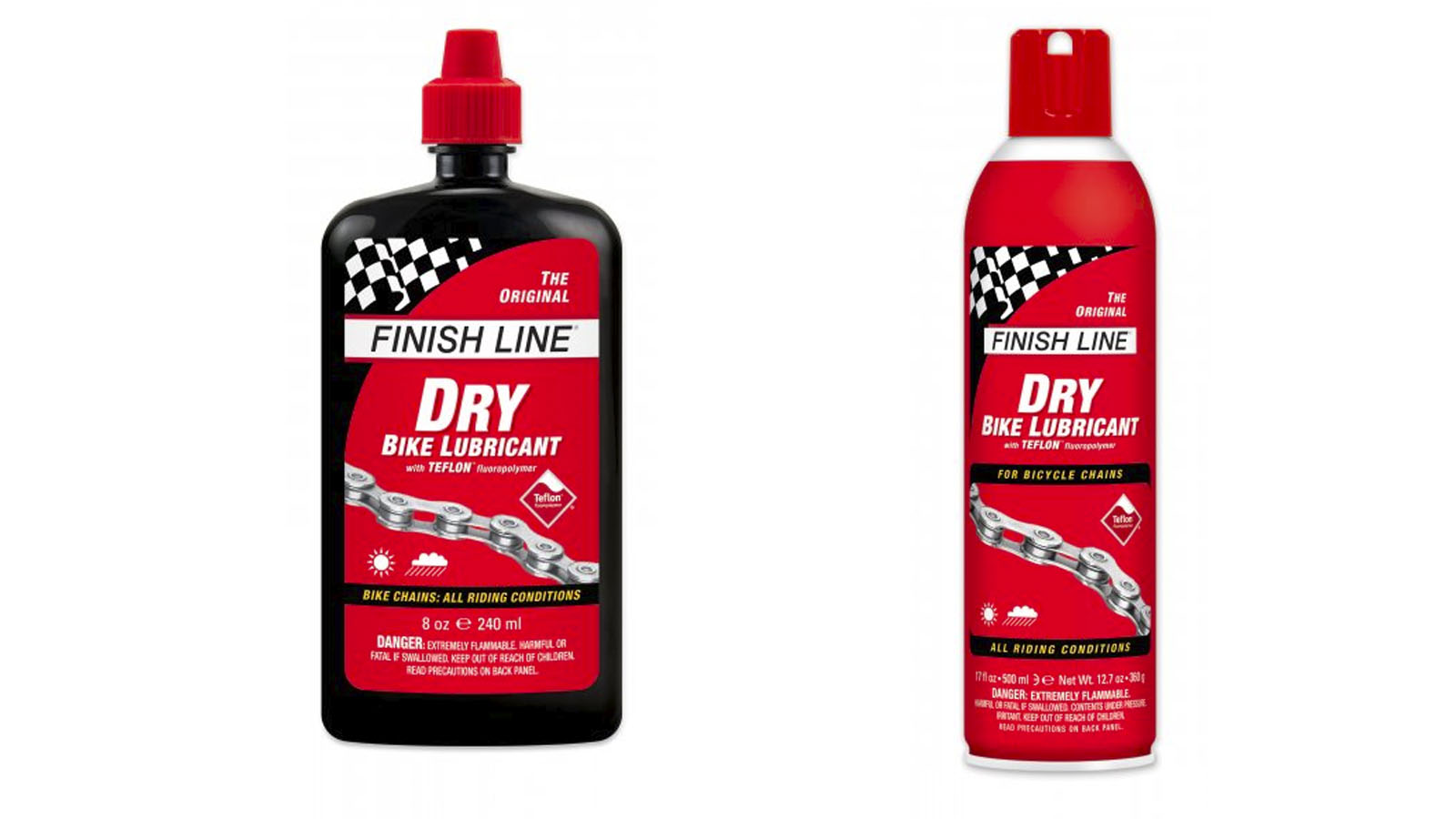The messy truth about spray-on chain lube
We've had enough of the mess and poor lubrication from spray-on drivetrain lubrication

Before the holidays, a press release from a popular bike maintenance brand touting its shiny new aerosol spray on chain lube landed in my inbox, and I groaned loud enough that my partner, who was sitting across the room, asked me what happened. Spray on chain lube is one of the worst ideas the bike industry has ever come up with, and I wish we could collectively put an end to it once and for all.
Aerosols sprays no longer contain the chlorofluorocarbons that ripped a hole in the ozone layer, and they are handy for certain jobs, whether making sure your skin is covered in an even coat of mosquito spray or de-stinking your pain cave after a sweaty indoor ride. On the bike, an errant spray can blow the grease off of something that needs to be greased or put oil on something that should never be oiled, they are wholly unnecessary.
When it comes to spray-on chain lube, the latter is a real risk. Especially with the proliferation of disc brakes across every category of bike, the extra work you make for yourself by contaminating your brake pads or coating your rotors with chain lube is immense. Even the oil from your hands can affect braking performance, so what do you think an oily blast from a spray-can will do?
Either way, I hope you have spare brake pads, plenty of brake cleaner, sandpaper and lots of clean rags handy. For the #teamrimbrake crowd, it’s not as big a deal to decontaminate a rim brake track and pads, but it’s definitely maintenance that can be avoided altogether with the non-aerosol version if the exact same lube.

Depending on your lube of choice, even the more viscous options can be hard to guide every drop onto the chain rollers without a drip or two finding its way onto your frame and garage floor. Putting an aerosol accelerant behind it, and sending a shotgun blast in the general vicinity of your chain sounds like an expensive way to make a slipping hazard on your floor, and creates extra work cleaning the mist of oil that didn’t hit your chain. Even in the glossy marketing imagery for spray-on chain lube, you can see clear as day how little actually ends up on the chain, and how much ends up on everything else — like in the photo above.
Worse still is that it doesn’t lube your chain all that well. The entire point of chain lubricant is to reduce the friction between moving surfaces so each link will actuate around your chainrings, cassette, and through the jockey wheels efficiently, loaded with hundreds of pounds of force as you grind up and hill, sprint for a town sign or spin along at high cadence.
Your chain is made up of four components: inner plates, outer places, a roller, and a pin. The pin is riveted to the outer plate, which passes through the inner plate with a roller in the middle. While no part of the outer plate as the chain spins, the inner plate rotates around the pin and the inside of the roller — so that’s where you need your lubricant to end up.
The latest race content, interviews, features, reviews and expert buying guides, direct to your inbox!
These voids are tiny, and even the best bike chain lubes are fighting an uphill battle relying on capillary action and the articulation of the chain to seep into the right places. When you’re precisely dripping lube onto each roller, it gives the solution the best possible chance to soak down deep into the chain.
Knowing this, it should come as no surprise that just about every independent test friction test we were able to find, spray on lubes were not only slower than the same exact formula in drip lube, but also motor oil and Vaseline.

When you are indiscriminately spraying lubrication on and around the chain, a good portion of what’s delivered will coat the non-moving components that don’t need lubrication, if it hits the chain at all. Worse, if you neglect to properly wipe down the chain, or anything else that was in the blast radius, it’s going to be a magnet for grit and grime. So again, this is more cleaning that is totally avoidable.
I will be the first to admit the bike industry does a lot of annoying things, from standards that are anything but standard, to incompatible parts and things that are horrendously overpriced for what they offer. But spray-on chain lube really grinds my gears, and if you use aerosol chain lube, it will make yours grind too because it’s not actually lubricating your chain.
Based on the Gold Coast of Australia, Colin has written tech content for cycling publication for a decade. With hundreds of buyer's guides, reviews and how-tos published in Bike Radar, Cyclingnews, Bike Perfect and Cycling Weekly, as well as in numerous publications dedicated to his other passion, skiing.
Colin was a key contributor to Cyclingnews between 2019 and 2021, during which time he helped build the site's tech coverage from the ground up. Nowadays he works full-time as the news and content editor of Flow MTB magazine.
